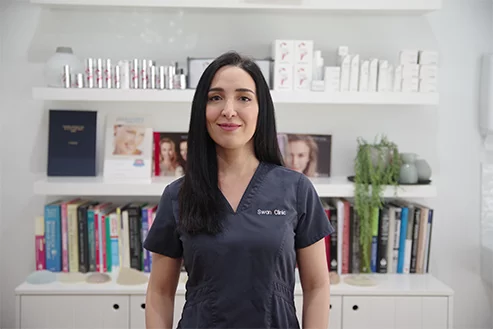UPPER ABDOMINOPLASTY
Who May Consider Upper Abdominoplasty?
Candidates for Upper abdominoplasty generally include individuals with excess skin or tissue in the upper abdominal area, particularly those who have a relatively toned lower abdomen. This procedure may also be suitable for patients seeking to minimize visible scarring, as incisions are typically placed along the lower breast line.
Procedure Overview
Upper abdominoplasty is performed under general anesthesia. The surgeon makes a horizontal incision along the lower rib cage, lifts the skin, removes excess fat and tissue, and tightens underlying muscles if needed. The surgery usually takes two to three hours.
Potential Risks – Upper Abdominoplasty
As with any major surgical procedure, there are risks involved. These include general surgical risks and those specific to the Upper Abdominoplasty:
- Infection at the surgical site, which may require antibiotics or further treatment
- Bleeding or haematoma (collection of blood under the skin)
- Anaesthesia-related complications, such as allergic reactions or cardiovascular effects
- Seroma formation (accumulation of fluid beneath the skin), which may require drainage
- Skin or tissue necrosis (poor blood supply to an area of skin, leading to tissue breakdown)
- Changes in sensation, including numbness or altered skin sensitivity in the abdominal area
- Blood clots, such as deep vein thrombosis (DVT) or pulmonary embolism, although rare, are serious risks of major surgery
Recovery and Aftercare – Upper Abdominoplasty
- A compression binder/garment is typically worn for up to 6 weeks to support healing and minimise swelling.
- Driving may be resumed after 1 to 2 weeks, once mobility and comfort allow and pain medication is no longer required.
- Return to work usually occurs within 1 to 2 weeks, depending on the type of work and the individual’s recovery.
- Light walking is allowed after you see us at your 2-week post op appointment.
- Strenuous activity, including lifting, bending, or exercise, should be avoided for 4 to 6 weeks.
- Targeted abdominal exercises should generally be delayed for up to 3 months to allow proper healing of muscle and skin layers.
- Post-operative reviews are essential to monitor progress, manage any complications, and assess wound healing.
- Scarring will mature over time; scar care will be given to support healing.
If you have any questions or wish to discuss Upper abdominoplasty options, please contact our clinic to schedule a consultation with Dr Reema Hadi.

